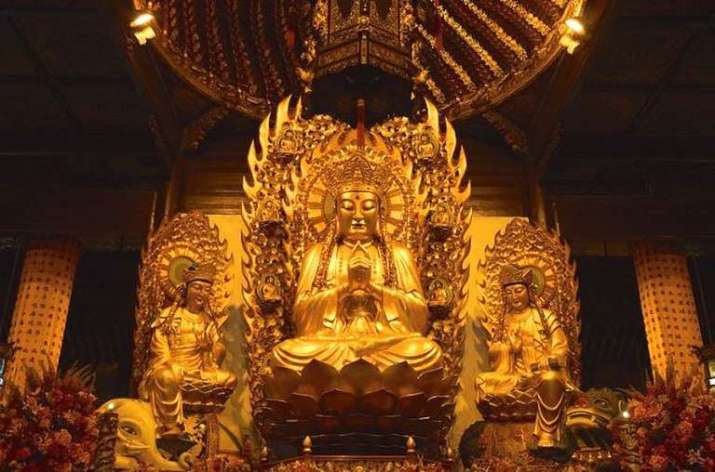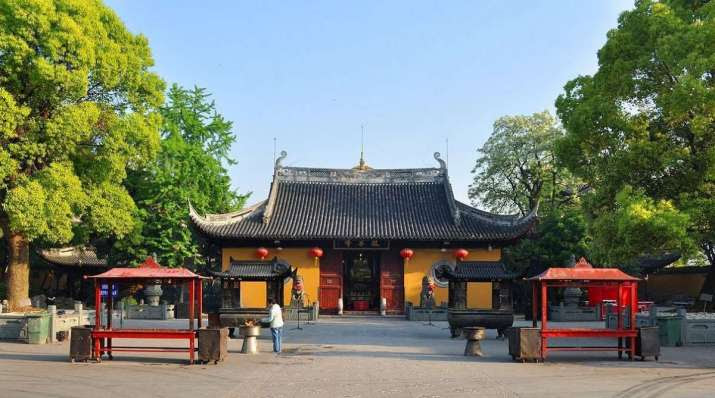

The Longhua Temple is a Buddhist temple dedicated to the Maitreya Buddha located in Shanghai, China
The government of Shanghai’s Xuhui District has requested formal protection for ancient traditions related to Chan Buddhism that have originated at, and been cultivated by, the city’s venerable Longhua Temple, as the authorities seek to ensure that the traditions and practices survive for the benefit of future generations.
Seeking the input of experts and government officials on ways to protect the temple’s local culture, the district has submitted an application to the Shanghai Cultural Heritage Administration, calling for Chan Buddhism-related cultural activities from Longhua Temple—including art, meditation, music, and tea—to be officially recognized as part of Shanghai’s cultural heritage.
“The listing of the Longhua [Chan] culture can help the young to learn about traditional cultures and the history of the city,” said the president of the Shanghai Intangible Cultural Heritage Protection Association, Gao Mingchun. (Shine)

Gao added that the traditional temple fair, which was first held during the Ming dynasty (1368–1644) and has continued at Longhua for some 400 years, is also under threat due to redevelopment of the surrounding neighborhoods, despite at one time being a prosperous regional center of commerce.
“This cultural heritage has been challenged by rapid urban developments in the surrounding areas,” the president of the Chinese Folklore Society, Liu Quili, noted. (Shine)
Chen Qinjian, a professor at East China Normal University, echoed the sense of loss, recalling: “I can still remember the happiness I felt while visiting the Longhua Temple fair, eating traditional snacks and buying handicrafts.” (Shine)
Thought to have been founded in 242, during the Three Kingdoms (220–280) period, and dedicated to the future Buddha Maitreya, Longhua is the oldest and largest temple complex in Shanghai, occupying an area of some 20,000 square meters. A bell tower stands near the entrance to the main temple, containing a 3.3-tonne bronze bell that is struck 108 times every New Year’s Eve. The temple and its famous pagoda were once included among the eight historic sights of old Shanghai, although today it is the only remaining landmark.

The buildings making up the complex have been reconstructed at various times over the course of the temple’s history, however, the existing architecture preserves the style seen in Chan Buddhist monasteries of the Song dynasty (960–1279). With the exception of the main pagoda, most buildings in the complex were rebuilt during the reigns of the Tongzhi Emperor (r. 1861–75) and the Guangxu Emperor (r. 1875–1908), with a more recent restoration of the entire complex undertaken in 1954.
The temple’s iconic pagoda has been dated to 977, in the early part of the Northern Song dynasty (960-1126), making it one of the oldest pagoda’s in southern China. Standing 40.4 meters in height, the structure comprises seven tapered tiers built from brick and decorated with wooden features. The hollow main structure contains a wooden staircase that leads to the upper floors, however due to its age and fragile condition, the pagoda is closed to the public. While the base and main body of the tower are original, the wooden eaves and balconies have been renovated and reconstructed several times, retaining the original Song dynasty architectural style.
According to data for 2010 from the Washington, DC-based Pew Research Center, 18.2 per cent of China’s population identify as Buddhists. The largest segment of the population, 52.2 per cent, is classified as holding no religious affiliation, with folk religions accounting for 21.9 per cent, Christianity 5.1 per cent, and Islam 1.8 per cent.












